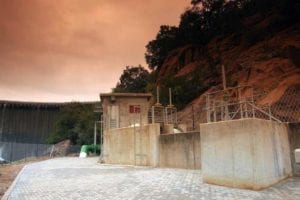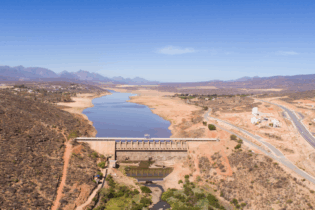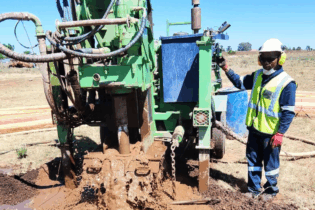One of the most common misconceptions with regards to water reuse in the South African context is that it is a more expensive option that delivers a lesser quality product. This is not the case, Bigen Africa Services’ divisional managing principal: Water and Sanitation, Dr JJ (Mias) van der Walt tells Water&Sanitation Africa.
“South Africa is a water-scarce country where development, stimulated by mining activities, is often far from water sources. It is therefore essential that local source be optimised before large and expensive transfer schemes are considered,” he says, discussing the current water context in South Africa. According to Van der Walt, in many cases there is no alternative but to develop expensive transfer schemes. “The scarcity of water has forced water users to reassess the reuse potential of local water sources. This is why reuse is such an important part of the arsenal of water sources.” He adds that Bigen Africa has been involved in a number of projects where the optimisation of local resources through reuse has significantly improved the water supply to an area. “Not only is there a financial benefit in applying water reuse, but in most cases water security is also improved.” In fact, taking local conditions into consideration only serves to highlight the advantages of water reuse further. “This is exactly the advantage of water reuse: the fact that it is local and that long pipelines are often not required. In countries such as South Africa, where water is scarce, local reuse therefore makes sense from an environmental and economic perspective,” adds Van der Walt. Debunking the mythsThe most common misconception related to water reuse is water quality and cost, he says. “In the coastal areas it is, for instance, much more cost effective to reuse effluent to potable standards compared to the desalination of sea water. Further away from the coast, it is more cost effective to utilise local effluent compared to transferring raw water over long distances.” The myths relating to water quality are, however, a little bit harder to debunk as they are often as a result of misinformation and perceptions. “Water treatment technology has really advanced to the stage where almost any water can be treated to a potable standard. The limiting factor would the cost to treat the water and not the quality achievable from the reuse facility.” He adds that to change perceptions takes time and even sometimes urgency and necessity as a result of an almost desperate situation. “In the case of Windhoek, for instance, there was not much of an option but to reuse water and treat to potable standards. In such cases consumers are less resistant to change.” The fact that more water reuse schemes are being implemented provides a large pool of proof that water reuse can work in a sustainable manner, says Van der Walt. “This builds confidence among consumers.” Treatment technologies
According to Van der Walt, the type of technology used in water reuse depends entirely on the quality of the water that needs to be treated. “A variety of unit processes are available to treat specific contaminant present in the water. These processes are linked in a treatment train to ensure potable water.” The most common types of process used during domestic water reuse include phase separation, oxidation, disinfection, adsorption and desalination. Relating to the local markets and the technologies being rolled out in South Africa specifically, he says three types of water reuse plants are being constructed: municipal water reuse, mine water reuse and industrial water reuse plants. According to Van der Walt, municipal water reuse often uses the effluent from wastewater treatment after impoundment in a dam. Examples of such plants include Roodeplaat WTW, Bospoort WTW, Rietvlei WTW.
“Many mines are also now implementing water reuse plants to treat water returned from tailings dams, underground activities or opencast areas. A good example is the recently completed eMalahleni water reclamation plant that treats water abstracted from local coal mines to potable standards. Many of the platinum mines are also constructing water reclamation plant utilising water returned from their tailings storage facilities for industrial quality water,” says Van der Walt, adding that many examples exist of large industrial water reuse plants.
NWRS 2 supports water reuseWith the gazetting of the National Water Resources Strategy 2nd edition (NWRS 2) on 22 August 2013, South Africa is moving into a new era of water management. The Department of Water Affairs commented on the current context, saying that, “in assessing the situation, dealing with the present as well as moving into the future, it should be clear that South Africa will need to adopt an advanced and smart water management approach. The traditional approach of mainly focusing on new water resource development must be extended to also address and prioritise sustainable management including asset management and effective operations, effective use and demand management, local resource optimisation including ground water utilisation, water systems management and control, reuse, desalination and utilisation of sea water, new technology and, very importantly, the protection of our precious water resources.” This again has brought water reuse into the limelight, and Van der Walt agrees this is a necessity. “The NWRS 2 absolutely supports water reuse as key building block to optimise local resources,” he says. He adds that this is of critical importance because, “if local resources are not optimised through reuse, expensive and large transfer schemes need to be constructed and this will increase the cost of water to consumers. In some cases it is just uneconomical to bring water from afar and water reuse is the only alternative.” Projected priorities
Bigen Africa has also taken this into consideration in its focus moving forward. As Van der Walt explains, the company’s focus is “to ensure that the local resource is optimally utilised and forms part of a feasible project at an affordable water cost ensuring that the consumer health is protected by selecting appropriate treatment technology”. He adds: “The key to water reuse scheme is to identify the opportunity first. The rest is more of an engineering challenge. Our focus will be to identify more water reuse opportunities.” Some of Bigen Africa’s most recent completed projects include the Roodeplaat WTW 60 Mℓ/d process upgrade, which has been a highlight for Van der Walt. New developments include a number of reuse plants in the Rustenburg and Mangaung areas. “These projects are still being conceptualised and not much detail is available.” These projects are, however, unique – especially in the local context – as they are the start a new way of thinking about water as capital and not simply a consumable, says Van der Walt. “Water can be reused, traded, treated and reused again and again. In some cases, water builds up a ‘memory’, but technology exists that can remove this water memory to produce a product that is cleaner than rainwater.” As such, these projects are set to change the water landscape in the communities and regions they are located in through quite simply, as he explains, “ensuring a more sustainable and affordable drinking water”. However, this does not mean that the roll-out of reuse projects and technologies is without challenges. “Water reuse is a dynamic field as no water reuse scheme is the same. The key challenge is to identify the key risks associated with the water source, the technology required, the public perception and the environmental impacts.” How is Bigen Africa assisting in overcoming these challenges? “Through continuous innovation,” says Van der Walt quite simply. Without the reuse of water, he believes the South African landscape of tomorrow looks both dry and thirsty. With it? “Not so dry and thirsty,” he concludes.








